Discover the fascinating wildlife just across the channel
Once you’re cruising along the scenic roads of France, it’s hard not to be distracted by the mesmerising wildlife that inhabit the forests, mountains and beaches of this beautiful country. From the endangered bears of the Pyrenees mountains, to the grunting wild boar of the north, you’re bound to discover a species that captivates you. To help you on your wildlife journey, we’ve put together a list of some of the most popular animals in the country, including where you’re likely to spot them. So, pack up your binoculars, book your ticket across the channel with LeShuttle, and begin your very own wildlife expedition today.
The south genets
Introduced from Africa by the Saracens in the 12th century, genets are now a commonly found mammal in the south west of France, close to the Pyrenees mountains. Feasting on smaller mammals and some vegetation, these pretty cat-like creatures can be found in heavily wooded areas. With long, striped bushy tails and a spotted back, they're also pretty easy to identify, so make sure you keep your eyes peeled during your next road trip through France.
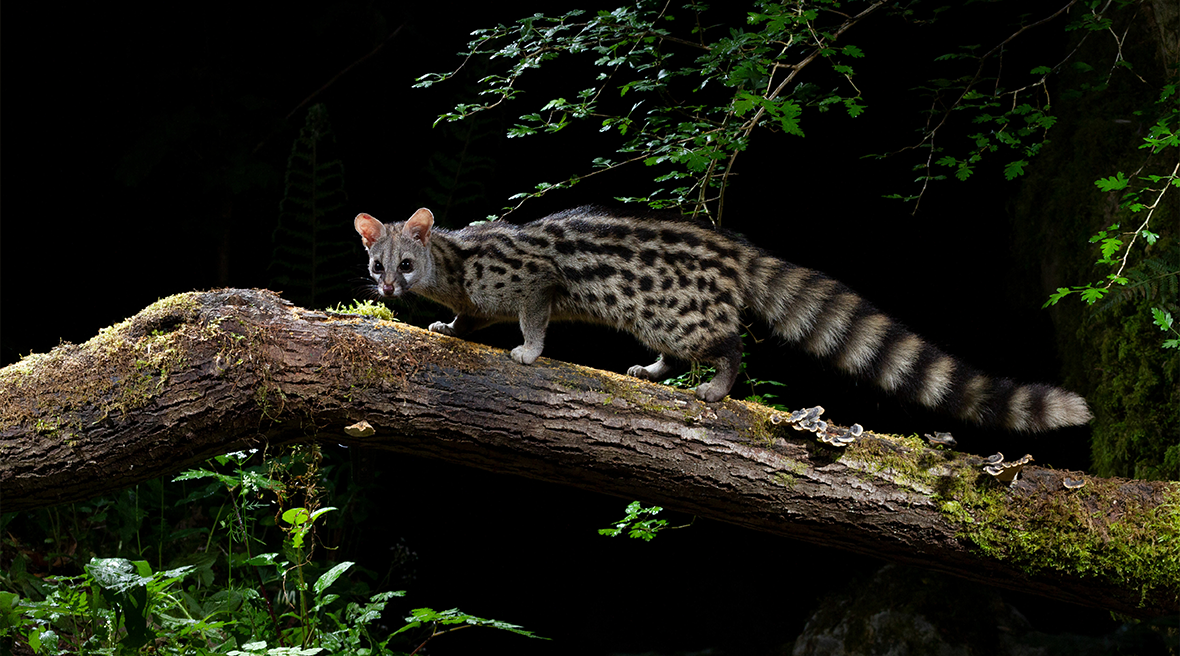
See genets on your travels in France
Green lizards
These brightly coloured reptiles love to live in humid woodland, so the southern and north west of the country is where you're likely to find one or two of these fascinating animals scurrying across rocks. The lizards are mostly, unsurprisingly, bright green, with the male of the species often displaying a blue chin, and the juveniles appearing to be almost brown in colour. These beautiful creatures love to feed on large insects as they hunt through the tall grass, and in the perfect habitat and environment, they can grow up to 40-centimetres in length.
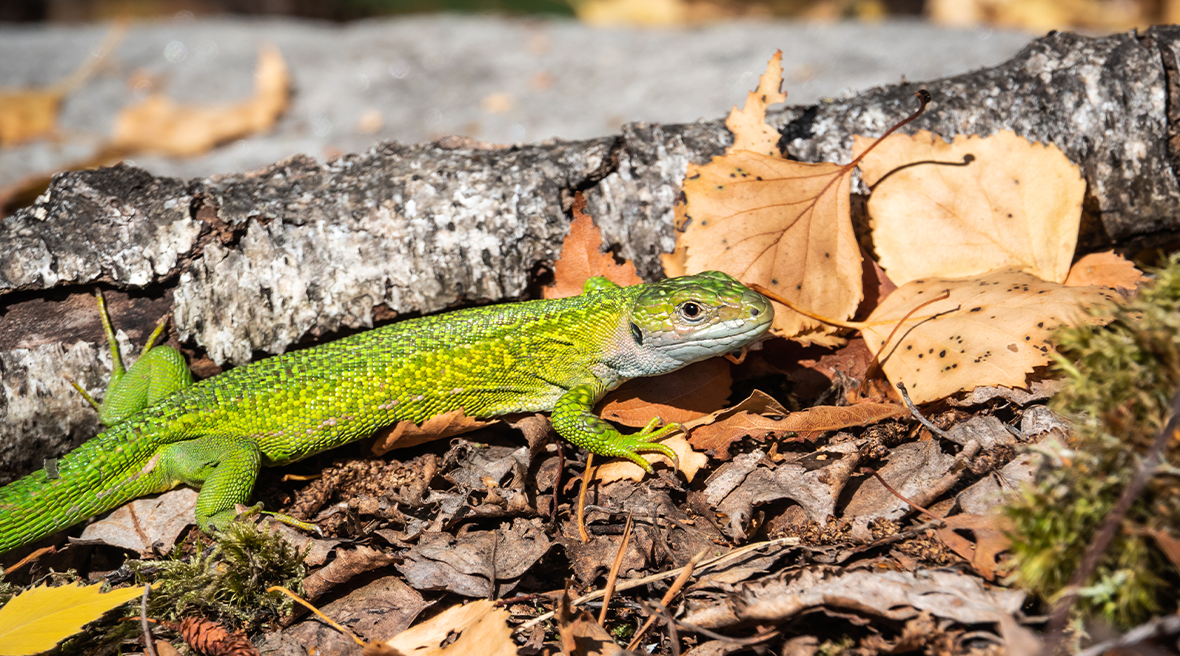
Lizards camouflage themselves by choosing rocks that best match the colour of their backs
Bears
Reintroduced to the Pyrenees mountains a few years ago, the number of bears settling in France has increased considerably over the years, despite protests from the local sheep farmers, who fear for their livestock. Although the country has seen a rise in bears, the animals are still considered endangered. There is said to be only around 20 bears roaming the national parks. Even though it's unlikely you'll spot one in the wild, the best time to track them down is during the summer, when they're less lethargic. Just remember to keep a safe distance, they make look cuddly, but at two-metres in height and 70-kilograms in weight, they're anything but.
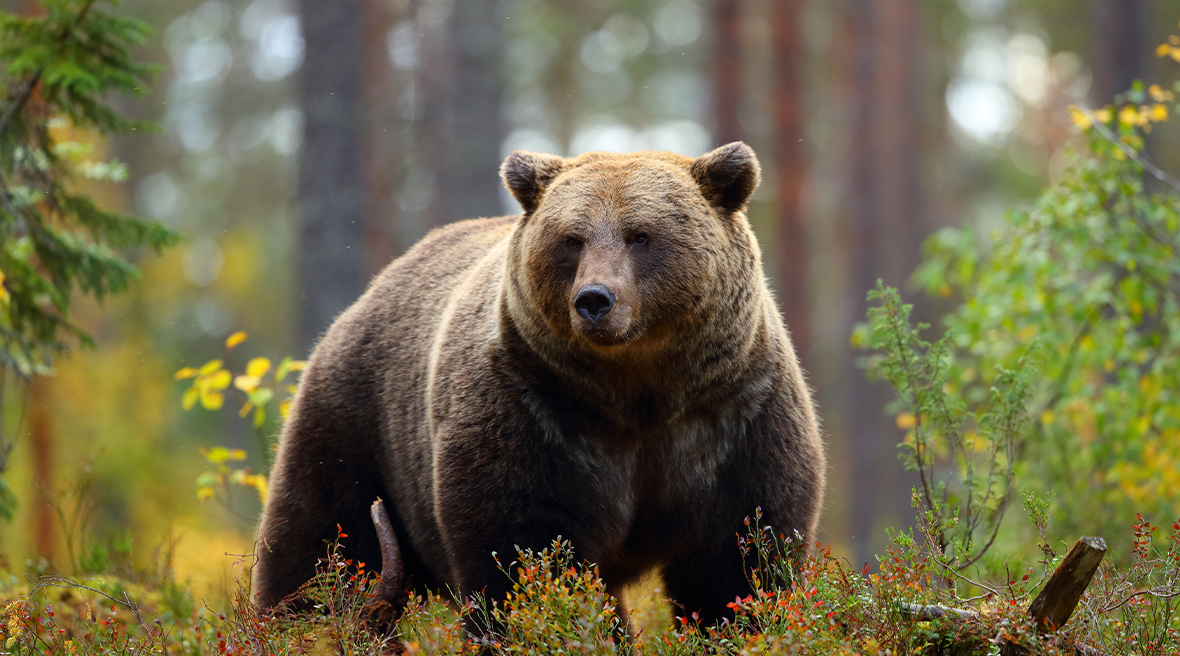
In Latin, the Eurasian brown bear is Ursus arctos arctos
Chamois
Native to the Pyrenees mountains in the south west of France, the sturdy chamois goats are well experienced in the art of clambering up mountains and cliff faces. During the summer months, the chamois climb high up into the mountains, often reaching summits, where they fill-up on long grass and herbs. However, when the winter comes and the mountains become colder, you’ll often spot lone chamois in the forested areas at the foot of the hills, so they can feed on the thick barks of trees.
The chamois goats have a distinct face, which is white with defining black stripes and two short curled horns. Plus, they’re quite small in stature and have a slight hump on their back, making them pretty easy to identify when hiking through the Pyrenees mountains.
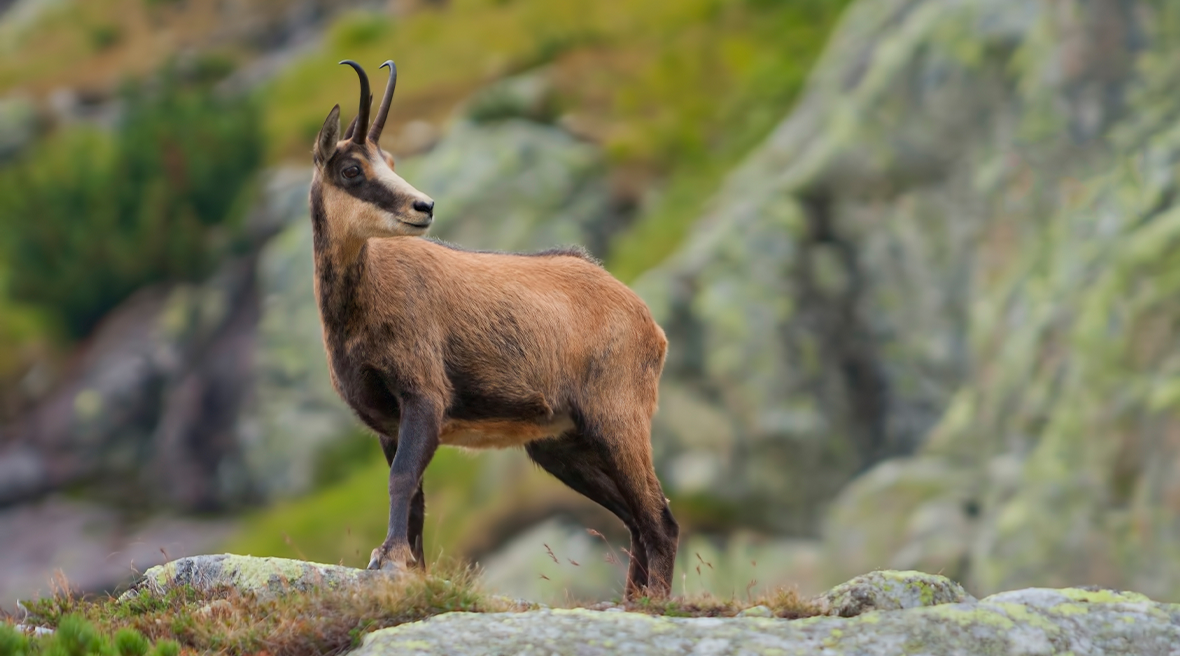
You may be lucky to spot the mountain goats in the Pyrenees
The north wolves
Once extinct in France, during the 1990s wolves travelled from Italy to find refuge in this country, eventually settling in the French Alps. Nowadays, there are over 200 wolves living in France, with many of them making the journey from the snow-capped mountains to the warmer southern coast. Despite the increase in numbers, French wolves are endangered, so sightings of these beautiful creatures are few and far between. So, if you do spot one, make sure you sit back and admire it as it prowls over the hills.
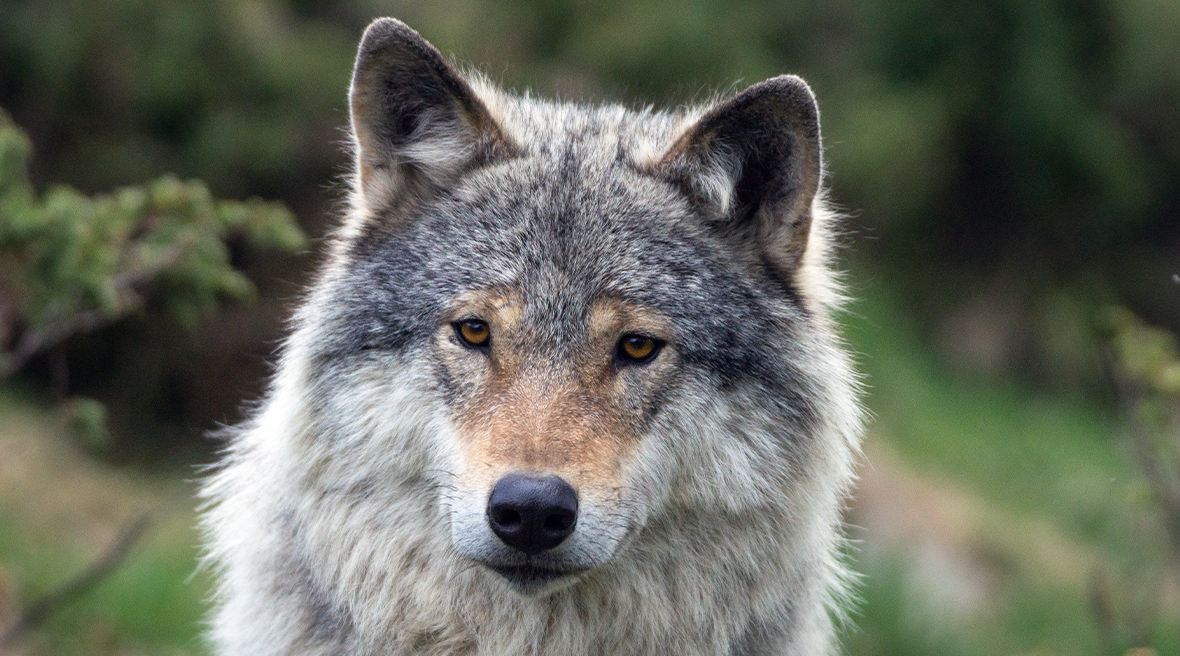
In the moderate latitudes of Europe, the wolf's coat is predominantly a dark grey to dark brown
Wild boar
Known as sangliers, there around two-million wild boar settled in France, meaning you're likely to spot a group or two during your drive throughout this magnificent country. Found mostly in the rural areas of France, you'll often spot these enchanting animals snuffling for food with groups of up to 50 others, including little piglets, otherwise known as marcassins.
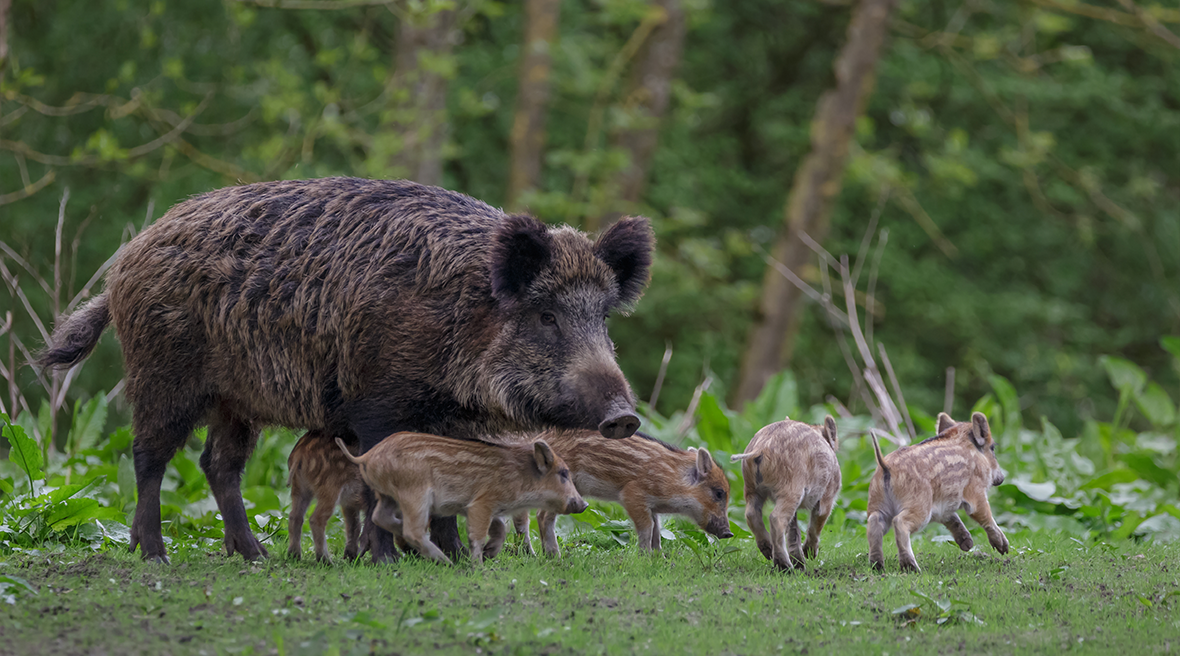
The main habitats favoured by boars in Europe are deciduous and mixed forests
European wild cats
European wild cats can be found right across the north east of France, and even in parts of the south west. They tend to live in dense forest areas, to avoid human contact at all costs. So, if you do want to find them, be sure to make the journey to some of the country's best forests, such as Parc Naturel Régional des Ballons des Vosges, in the regions of Alsace, Franche-Comté and Lorraine.
Much larger than their domestic cousins, wild cats have a thick, long, tan and striped coat, and can weigh up to anything between three and five kilograms. Using their strong limbs, they hunt down small mammals and birds to feed themselves and their kittens, a truly amazing sight you should aim to witness.
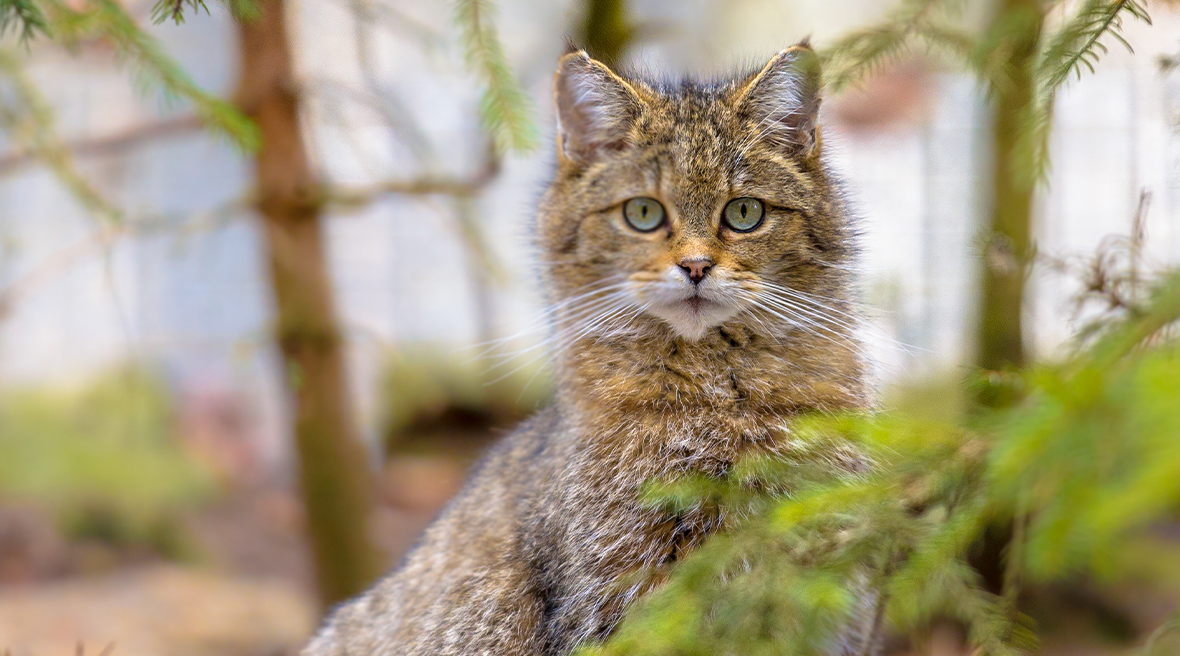
The European wildcat is predominantly nocturnal, but also active in the daytime when undisturbed
Golden eagles
These giant birds of prey are often spotted soaring through the air of northern France, but can also be found swooping past the mountainous regions of the Alps and the Pyrenees in the southern parts of the country. These magnificent birds prefer to make nests in the forests of northern France and some of the more rocky mountains, but you're just as likely to see them hunting through the air, as you drive through the windy, scenic French roads.
The birds are brown and grey in colour, with golden-yellow beaks and feet, and a huge wingspan that's hard to miss. When it comes to feeding, these beautiful creatures feast on smaller mammals and other birds, but they have been known to try their hand at slightly bigger animals too.
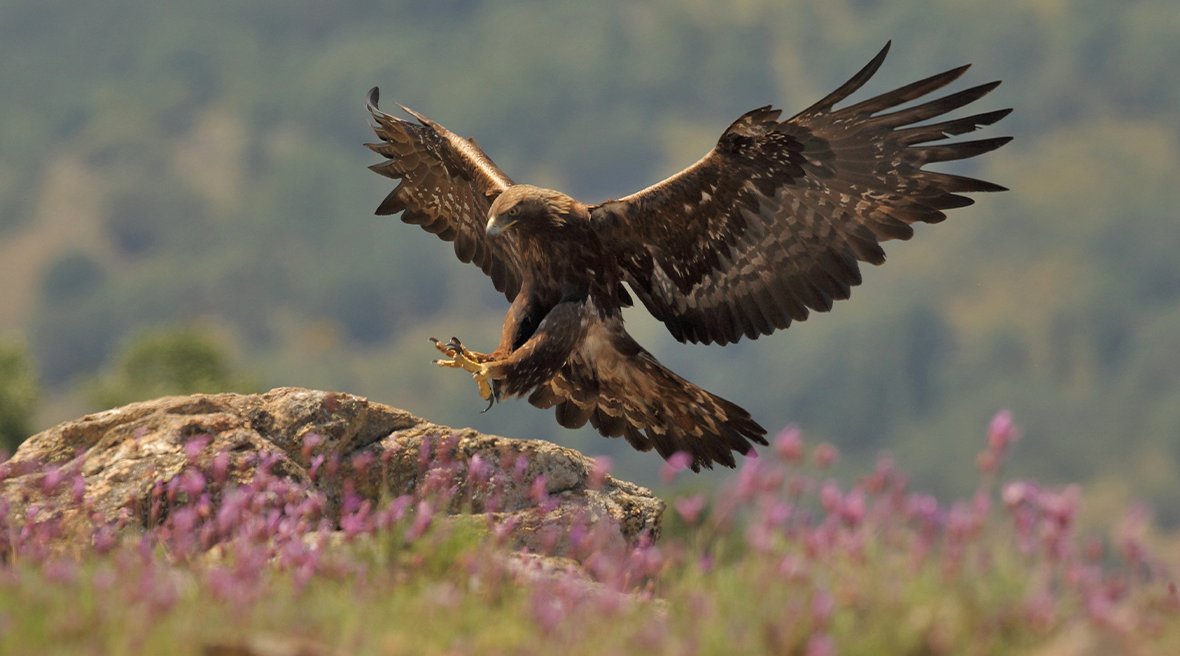
Golden eagles use their agility and speed to snatch up a variety of prey
Getting there
If you want to experience some of the more unusual animals that call France their home, you can do so in no time at all. It takes just 35-minutes to journey from the UK to France with LeShuttle, meaning you’ll be well on your way to enjoying the wildlife.